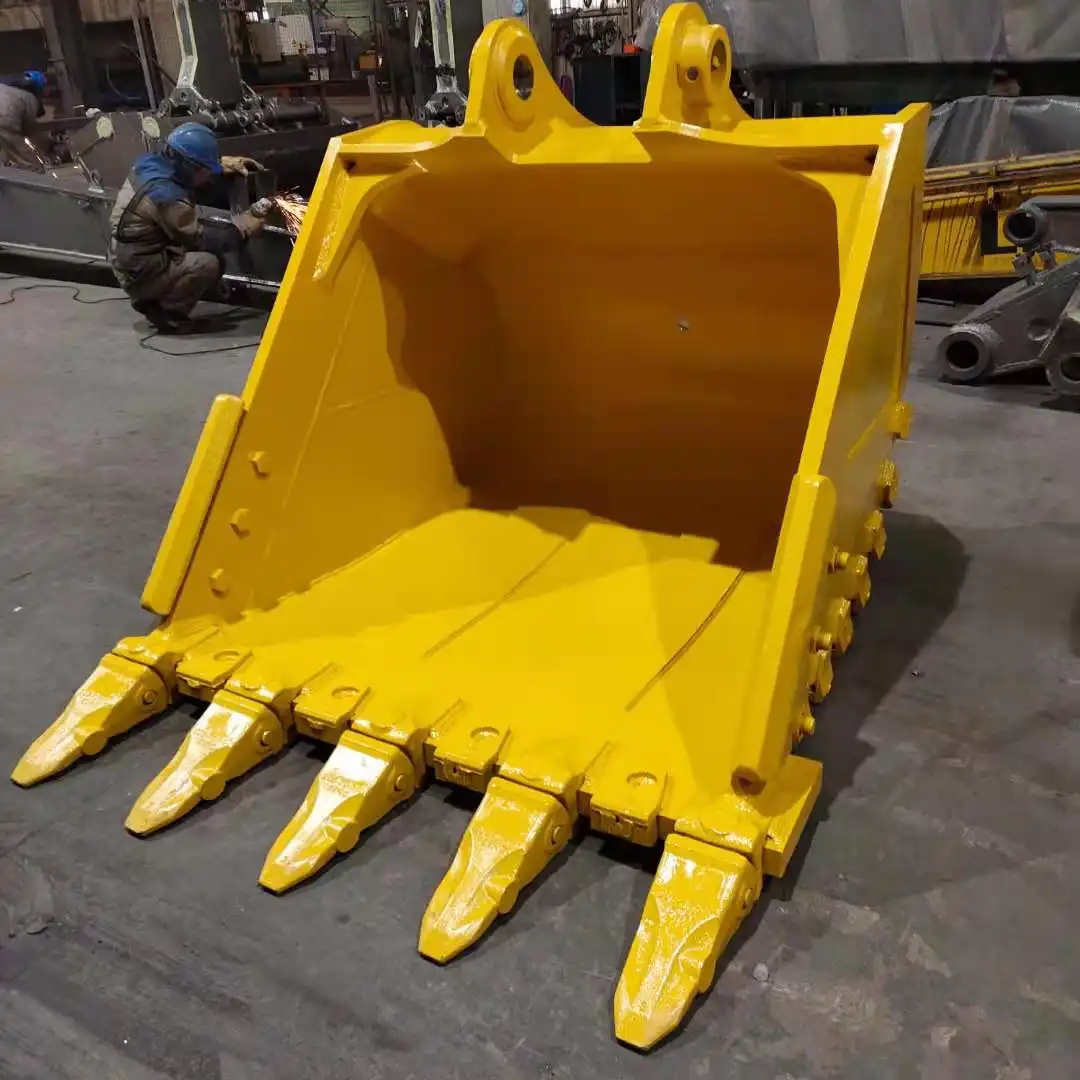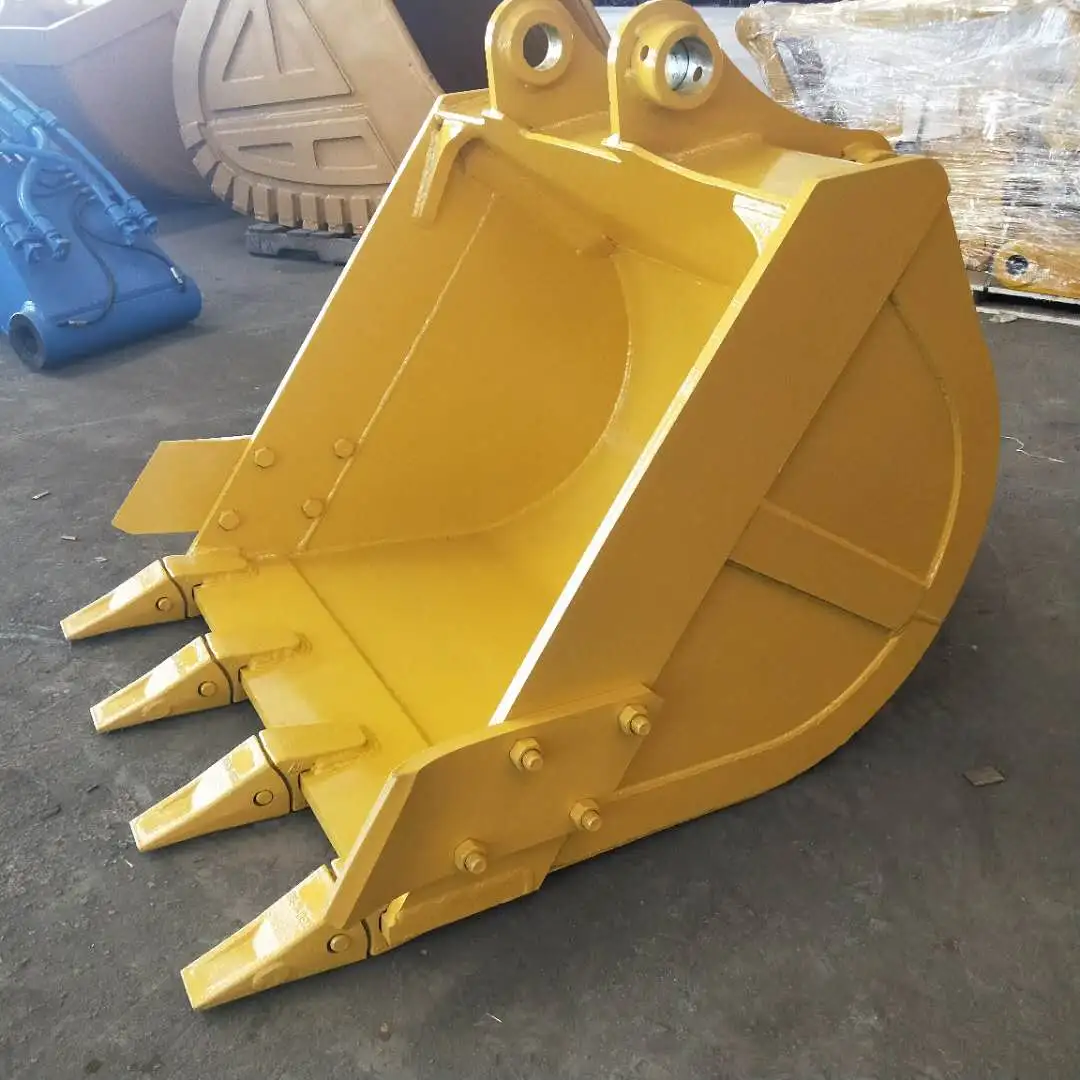How to remove excavator bucket?
Removing an excavator bucket safely and efficiently requires proper knowledge of mechanical systems, safety protocols, and equipment handling procedures. Whether you're working with pin-on systems or quick coupler mechanisms, understanding the correct removal process prevents equipment damage, reduces downtime, and ensures operator safety during maintenance operations. Professional operators in railway construction, mining, demolition, and landscaping industries must master these techniques to maintain peak equipment performance.

Safety Precautions First
Equipment safety protocols form the foundation of successful excavator bucket removal operations, protecting both personnel and valuable machinery from potential hazards. Experienced operators understand that cutting corners on safety procedures can result in serious injuries, equipment damage, and costly project delays. Establishing comprehensive safety measures before beginning any removal work creates a controlled environment that promotes efficient operations.
Pre-Removal Equipment Inspection
Thorough equipment inspection identifies potential safety hazards and mechanical issues before they become dangerous situations. Operators must examine hydraulic lines for leaks, cracks, or wear that could cause sudden pressure loss during removal. Pin conditions, wear patterns, and corrosion levels provide valuable insights into attachment condition and removal difficulty.
Hydraulic system pressure must be completely relieved before attempting bucket removal to prevent unexpected movement or component failure. Modern excavators include pressure relief valves and lockout mechanisms that ensure safe working conditions. Checking hydraulic fluid levels and system integrity prevents contamination and maintains optimal performance during the removal process.
Ground conditions and workspace preparation significantly impact removal safety and efficiency. Level, stable surfaces provide secure working platforms, while adequate clearance around the excavator prevents accidental contact with obstacles or personnel. Weather conditions including wind, rain, or extreme temperatures may require postponing removal operations to maintain safe working conditions.
Personal Protective Equipment Requirements
Appropriate personal protective equipment serves as the last line of defense against workplace injuries during bucket removal operations. Hard hats protect against falling objects or accidental contact with equipment components, while safety glasses shield eyes from hydraulic fluid splashes or metal debris. Steel-toe boots provide foot protection against heavy components and crushing hazards.
High-visibility clothing ensures operator visibility around heavy equipment, particularly important in busy construction sites or railway maintenance operations. Work gloves improve grip on tools and components while protecting hands from sharp edges, hot surfaces, and hydraulic fluids. Hearing protection becomes necessary when using pneumatic tools or working in high-noise environments.
Specialized equipment including hydraulic jack stands, lifting slings, and support blocks may be required depending on bucket size and removal method. These tools must be inspected, rated for appropriate loads, and properly positioned to ensure safe lifting and support during removal operations.

For Pin-on Systems
Pin-on attachment systems represent the traditional method for securing excavator bucket attachments to excavator arms, utilizing robust steel pins and bushings to create mechanical connections. These systems provide reliable attachment points capable of handling extreme loads and harsh operating conditions common in mining, demolition, and heavy construction applications. Understanding pin-on removal procedures enables operators to perform routine maintenance and attachment changes efficiently.
Pin Identification and Access Preparation
Pin-on systems typically utilize two main connection points: the boom-to-bucket cylinder connection and the arm-to-bucket pivot connection. Each pin serves a specific structural function and requires particular removal techniques. Boom pins generally carry higher loads and may require additional support during removal, while arm pins control bucket rotation and positioning.
Accessing pins often requires positioning the excavator arm and bucket in specific orientations to provide adequate working space. Lowering the bucket to ground level provides stable support and reduces hydraulic pressure on connection points. Extending or retracting the arm may be necessary to align pin access points with available tools and workspace.
Pin removal tools vary depending on pin size, accessibility, and local conditions. Hydraulic pin pullers provide controlled removal force for stubborn or corroded pins, while manual drift pins and hammers work effectively for routine maintenance. Some applications require heating equipment to expand pins or dissolve thread-locking compounds that secure fasteners.
Systematic Pin Removal Process
Pin removal follows a systematic sequence that prevents binding, reduces component stress, and maintains equipment alignment. Beginning with the bucket cylinder pin allows controlled bucket lowering while maintaining structural support through the arm connection. Proper support prevents sudden bucket dropping that could damage components or create safety hazards.
Hydraulic cylinder disconnection requires careful pressure relief and proper hose management to prevent contamination and fluid loss. Modern cylinders include quick-disconnect fittings that simplify removal, while older systems may require wrench flats and careful handling to prevent damage. Capping disconnected lines prevents contamination and maintains system cleanliness.
The final arm pin removal requires adequate bucket support to prevent falling or sudden movement. Lifting equipment, support stands, or ground contact provides necessary stability during pin extraction. Heavy buckets may require mechanical assistance or multiple operators to ensure safe handling throughout the removal process.
Pin Condition Assessment and Maintenance
Removed pins require thorough inspection to assess wear patterns, corrosion levels, and dimensional accuracy. Excessive wear, scoring, or corrosion indicates potential safety hazards and performance degradation that could affect future operations. Measuring pin diameter, length, and surface condition helps determine replacement needs and maintenance schedules.
Bushing condition assessment identifies wear patterns and clearance issues that affect attachment performance and longevity. Worn bushings create excessive play, reduce operational precision, and accelerate pin wear. Replacement scheduling based on measured wear prevents unexpected failures and maintains optimal equipment performance.
Proper storage and handling of removed pins prevents damage and contamination during maintenance periods. Clean, dry storage areas protect pins from corrosion, while organized systems ensure correct reassembly and prevent mixing of different-sized components. Documentation of pin condition and replacement history supports maintenance planning and warranty claims.

For Quick Coupler Systems
Quick coupler systems revolutionize attachment changes by enabling rapid bucket removal without manual pin handling or extensive tool requirements. These sophisticated mechanisms utilize hydraulic or mechanical locking systems to secure attachments while providing convenient release capabilities. Understanding quick coupler operation helps operators maximize equipment versatility and minimize downtime during attachment changes.
Quick Coupler Types and Operating Principles
Hydraulic quick couplers utilize pressurized fluid to operate locking mechanisms and secure attachment connections. These systems provide remote operation capabilities, allowing operators to connect and disconnect attachments from the cab without manual intervention. Safety locks prevent accidental release during operation while indicator systems confirm proper engagement.
Mechanical quick couplers rely on spring-loaded or manually operated mechanisms to secure attachment connections. These systems offer simplicity and reliability while reducing hydraulic complexity and potential leak points. Manual safety pins provide secondary locking mechanisms that prevent accidental disconnection during operation.
Universal quick couplers accommodate multiple attachment types and manufacturers through standardized connection interfaces. These systems enable operators to utilize diverse excavator bucket attachments without dedicated couplers for each attachment type. Compatibility verification ensures proper fit and safe operation across different attachment configurations.
Hydraulic Quick Coupler Release Procedure
Hydraulic quick coupler operation begins with proper excavator positioning and attachment support to ensure controlled release and prevent dropping. Ground contact or mechanical support provides stability during disconnection, while adequate clearance allows safe attachment removal. System pressure verification ensures adequate hydraulic power for reliable coupler operation.
Safety lock disengagement requires specific control sequences that vary among manufacturers and coupler designs. Most systems utilize dedicated control valves or switch combinations that prevent accidental activation. Indicator lights or gauges confirm safety lock position and system readiness for attachment release.
Primary locking mechanism release occurs through hydraulic actuation of coupler jaws or locking pins. Operators must maintain steady hydraulic pressure throughout the release sequence to ensure complete disengagement. Visual confirmation of release completion prevents premature movement that could cause attachment dropping or equipment damage.
Maintenance and Troubleshooting Quick Couplers
Regular quick coupler maintenance ensures reliable operation and prevents costly breakdowns during critical operations. Hydraulic system inspection includes checking fluid levels, filter condition, and line integrity. Contaminated fluid or worn filters reduce system performance and may cause coupler malfunction or failure.
Mechanical component inspection focuses on wear patterns, lubrication levels, and adjustment requirements. Pivot points, locking mechanisms, and safety devices require regular attention to maintain proper operation. Excessive wear or damage may compromise safety systems and require immediate attention before continued operation.
Troubleshooting common quick coupler problems requires systematic diagnosis of hydraulic, mechanical, and electrical systems. Slow operation may indicate hydraulic restrictions or worn components, while erratic behavior often results from contaminated fluid or electrical faults. Understanding system operation principles helps operators identify and resolve minor issues before they become major problems.
FAQ
①How long does bucket removal typically take?
Pin-on systems usually require 30-60 minutes depending on pin condition and operator experience. Quick coupler systems can accomplish removal in 2-5 minutes with proper positioning and system operation.
②What tools are essential for bucket removal?
Pin-on systems require drift pins, hammers, hydraulic pullers, and support equipment. Quick coupler systems need basic hand tools and may require hydraulic system diagnostic equipment for troubleshooting.
③Can bucket removal damage the excavator?
Improper procedures can cause hydraulic damage, pin wear, or structural stress. Following manufacturer guidelines and safety procedures prevents equipment damage and maintains warranty coverage.
④When should pins be replaced during removal?
Replace pins showing excessive wear, scoring, or dimensional changes exceeding manufacturer tolerances. Visual inspection and measurement during removal help determine replacement needs.
⑤Are special certifications required for bucket removal?
Most jurisdictions require basic excavator operation certification. Some specialized applications or work environments may require additional safety training or equipment-specific certification.
Trust TianNuo for Superior Excavator Bucket Solutions
TianNuo Machinery delivers exceptional quality excavator bucket attachments engineered for reliable performance across demanding applications. Our comprehensive product line includes Degree Rotating Hydraulic Tilt Ditching Buckets, Excavator Grid Bucket Screening Buckets, Railway dustpan excavator buckets, Front Loader Buckets, and Excavator Special-Shaped Buckets designed for effortless removal and installation procedures.
Whether you need Excavator Rotary Screening Buckets for waste management, High Frequency Screening Buckets for material processing, robust Clamshell Buckets for handling operations, or specialized Rock Buckets for mining applications, TianNuo engineering excellence delivers measurable performance improvements. Our bucket attachments streamline removal procedures while maximizing operational efficiency across railway construction, demolition, landscaping, and forestry applications.
Experience the TianNuo advantage with attachment solutions that combine innovative design, superior materials, and practical functionality. Contact our technical specialists for detailed product information, removal procedures, and customized solutions tailored to your operational requirements. Contact us at rich@stnd-machinery.com. Discover how TianNuo attachments can enhance your equipment performance while simplifying maintenance operations.
References
- Occupational Safety and Health Administration. "Construction Industry Safety Standards for Excavation Equipment Maintenance." OSHA 29 CFR 1926 Subpart P Guidelines, 2022.
- International Association of Foundation Drilling. "Excavator Attachment Safety and Maintenance Procedures Manual." ADSC Engineering Manual Series, 2021.
- American National Standards Institute. "Safety Requirements for Excavator Bucket Removal and Installation." ANSI/ASME B30.14 Mobile and Locomotive Cranes Standard, 2020.
- Equipment Manufacturers Association. "Quick Coupler Systems: Installation, Operation, and Maintenance Guidelines." AEM Technical Bulletin QB-2019, 2019.
- National Institute for Occupational Safety and Health. "Preventing Injuries During Excavator Maintenance Operations." NIOSH Publication No. 2021-106, Centers for Disease Control and Prevention, 2021.
About Author: Arm
Arm is a leading expert in the field of specialized construction and railway maintenance equipment, working at Tiannuo Company.

